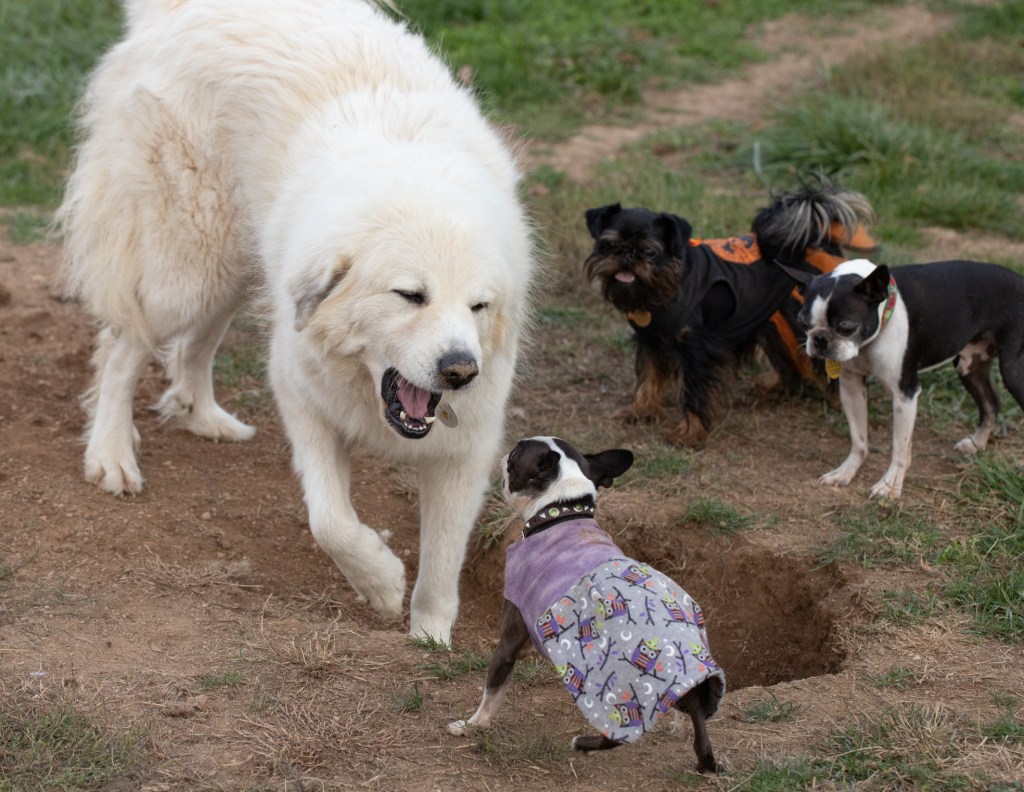Resource guarding. Pulling on the leash. Nipping and biting. These are all concerning signs of dominant behavior in dogs. Understanding and addressing this behavior is crucial for maintaining a healthy and harmonious relationship with your four-legged friend. While the concept of dominance in dogs has evolved over the years, it is still important to recognize the signs and respond appropriately. We’re going to break down the common signs of dominant behavior in dogs, discuss the underlying causes, and provide guidance on how to respond effectively.
Common signs of dominant behavior in dogs

Overprotective of parent
Dogs exhibiting dominant behavior may display protective tendencies towards their parent, guarding them against perceived threats. This can manifest as growling, barking, or lunging at other dogs or people who approach their parent.
Resource guarding
Dogs with dominant behavior may exhibit resource guarding, which involves protecting valuable items such as food, toys, or bones. They may growl, snarl, or snap when someone approaches these items, displaying possessive behavior.
Leash pulling
Dogs with dominant tendencies often try to assert control over their environment, which can result in excessive pulling on the leash during walks. They may attempt to lead the way, disregarding their parent’s commands and cues.
Inappropriate mounting
Mounting behavior, typically associated with sexual dominance, can be observed in both male and female dogs. It is a display of asserting control and may be directed toward other dogs or even humans.
Stealing attention from other dogs
Dogs seeking dominance may exhibit attention-seeking behaviors to divert attention away from other dogs. This can involve nudging or pushing their way in between their parent and another dog to receive exclusive attention.
Refusing to move off furniture
A dominant dog may claim furniture as their own territory and refuse to relinquish it when prompted. This behavior demonstrates a desire to control resources and assert their dominance.
Demanding play
Some dogs with dominant tendencies will demand play by placing toys in their parent’s lap or dropping them repeatedly at their feet. This behavior is an attempt to control the interaction and engage their parent on their terms.
Forcing their way to the front on leashed walks
Dogs displaying dominant behavior may insist on walking in front of other dogs or their parent during walks. This positioning signifies their desire to take the lead and assert their dominance.
Constant licking
Excessive licking, especially directed towards their parent or other dogs, can be a sign of dominance. It is an attempt to exert control and reinforce their status within the social hierarchy.
What causes dominant behavior in dogs

Several factors can contribute to the development of dominant behavior in dogs. Therefore, it is crucial to understand these causes. Then, you can effectively address the issue. Here are some causes of dominant behavior in dogs.
Lack of socialization with other animals
Insufficient exposure to other animals during a dog’s critical socialization period can result in behavioral issues, including dominance. Proper socialization helps dogs learn appropriate social skills and reduces the likelihood of developing dominant behaviors.
Insufficient training
Dogs that have not received consistent and positive training may struggle to understand their place in the family hierarchy. In the absence of clear leadership and guidance, they may attempt to assume dominant roles.
Environmental factors
Certain environmental factors, such as an overly permissive or inconsistent household, can contribute to the development of dominant behavior in dogs. Inconsistent rules, a lack of structure, or unclear boundaries can confuse dogs and lead them to assert dominance as a means of establishing order.
How to respond to dominance

If your dog is exhibiting dominant behavior, don’t lose hope. There are things you can do to respond to the problem.
Vet check
If you observe dominant behavior in your dog, it is crucial to rule out any underlying medical issues. Certain medical conditions, such as pain or hormonal imbalances, can contribute to behavioral changes. Consulting with a veterinarian can help determine if there are any underlying health concerns.
Obedience training
Enrolling your dog in obedience training can be immensely beneficial in addressing dominant behavior. Training sessions provide structure, establish clear communication, and reinforce your role as the leader. Positive reinforcement techniques and consistent training methods help dogs understand boundaries and appropriate behavior.
Consult a trainer or behaviorist
In more severe cases of dominant behavior, seeking the guidance of a professional dog trainer or behaviorist is highly recommended. These experts can assess your dog’s specific behavior, provide tailored strategies for modification, and work with you to create a behavior management plan.
Addressing dominance requires patience and consistency. Then, with proper attention and training, you can help your dog develop into a well-adjusted and obedient companion.









